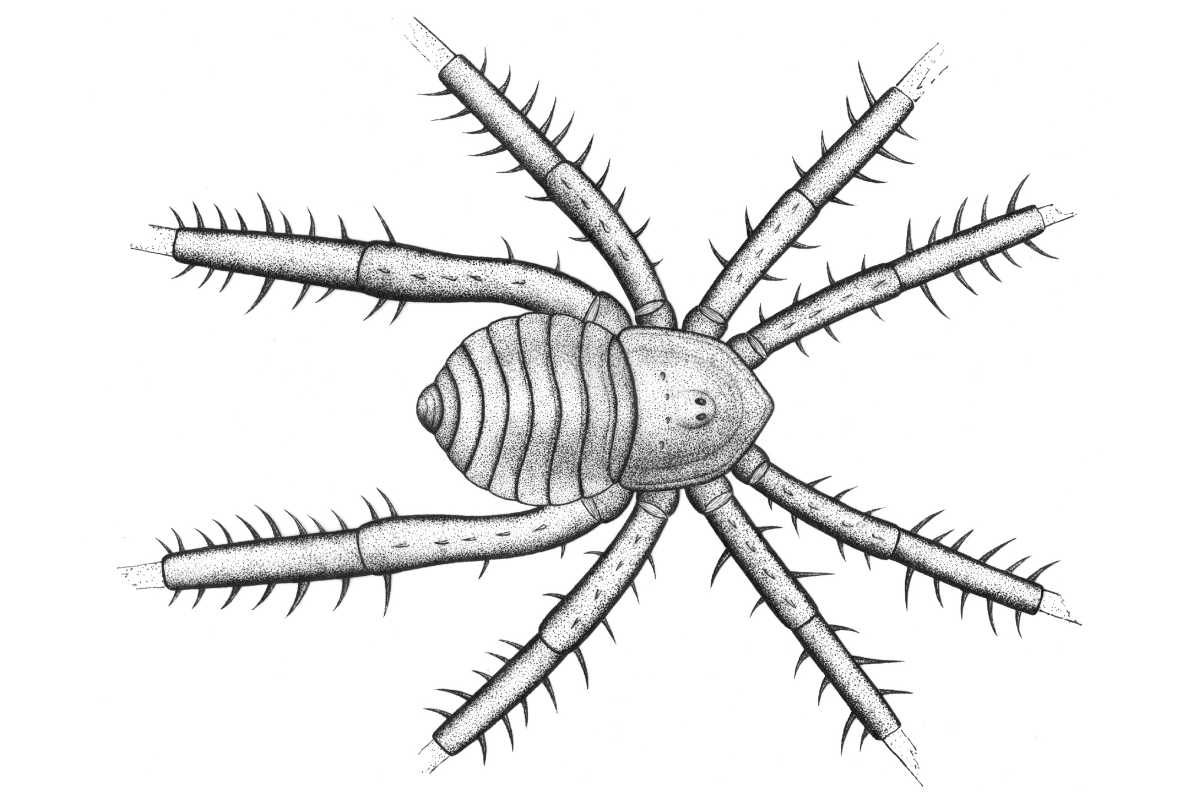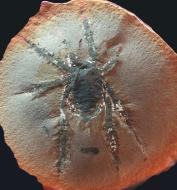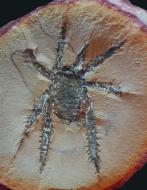More than 300 million years ago, all sorts of arachnids crawled around in the Carboniferous coal forests of North America and Europe. These included familiar forms we would recognise today, such as spiders, harvestmen and scorpions, as well exotic animals which now occur in warmer regions such as whip spiders and whip scorpions. There were also some quite strange-looking arachnids in these habitats which belonged to groups that are now long extinct.
One such fossil was recently described in a new paper published in the international science journal, Journal of Paleontology, co-authored by Paul Selden from the University of Kansas and the Natural History Museum of London and Jason Dunlop from the Museum für Naturkunde Berlin. Douglassarachne acanthopoda comes from the famous Mazon Creek locality in Illinois, USA, and is about 308 million years old. This compact arachnid had a body length of about 1.5 cm and is characterized by its remarkably robust and spiny legs, such that it is quite unlike any other arachnid known: living or extinct.
The Carboniferous Coal Measures are an important source of information for fossil arachnids, and represent the first time in Earth history when most of the living groups of arachnids occurred together. At the same time, the fauna was still quite different to today. Spiders were a rather rare group, only known at that time from primitive lineages, and they shared these ecosystems with various arachnids which have long since died out. Douglassarachne acanthopoda is a particularly impressive example of one of these extinct forms. The fossil’s very spiny legs are reminiscent of some modern harvestmen, but its body plan is quite different from a harvestman, or any other known arachnid group.
This led the scientists to conclude that it does not belong in any of the known arachnid orders. Unfortunately, details such as the mouthparts cannot be seen, which makes it difficult to say exactly which group of arachnids are its closest relatives, but it could belong to a wider group which includes spiders, whip spiders and whip scorpions. Whatever its evolutionary affinities, these spiny arachnids appear come from a time when arachnids were experimenting with a range of different body plans. Some of these later became extinct, perhaps during the so-called "Carboniferous Rainforest Collapse", a time shortly after the age of Mazon Creek when the coal forests began to fragment and die off. Or perhaps these strange arachnids clung on until the end Permian mass extinction?
The Mazon Creek fossil locality is one of the most important windows into life in the late Carboniferous, and has produced a wide range of fascinating plants and animals. The present fossil was discovered in a clay-ironstone concretion in the 1980s by Bob Masek and later acquired by the David and Sandra Douglass Collection and displayed in their Prehistoric Life Museum. The genus name Douglassarachne acknowledges the Douglass family, who kindly donated the specimen to the Field Museum of Natural History in Chicago for scientific study once it became apparent that it represented an undescribed species, while acanthopoda refers to the unique and characteristic spiny legs of the animal.
Publication: Selden, P. A. & Dunlop, J.A. 2024. A remarkable spiny arachnid from the Pennsylvanian Mazon Creek Lagerstätte, Illinois. Journal of Paleontology. https://doi.org/10.1017/jpa.2024.13


